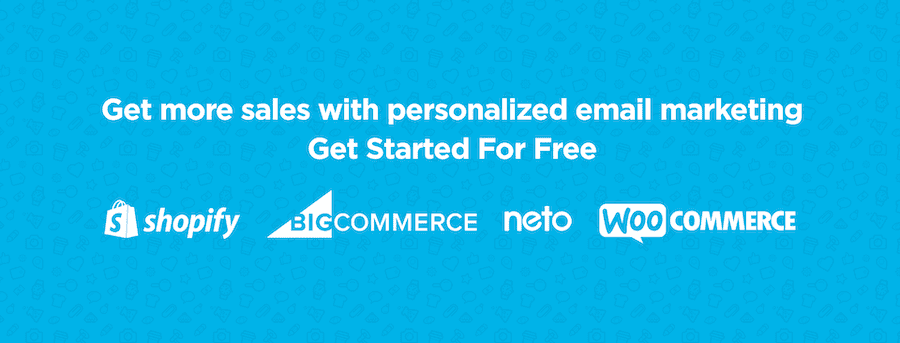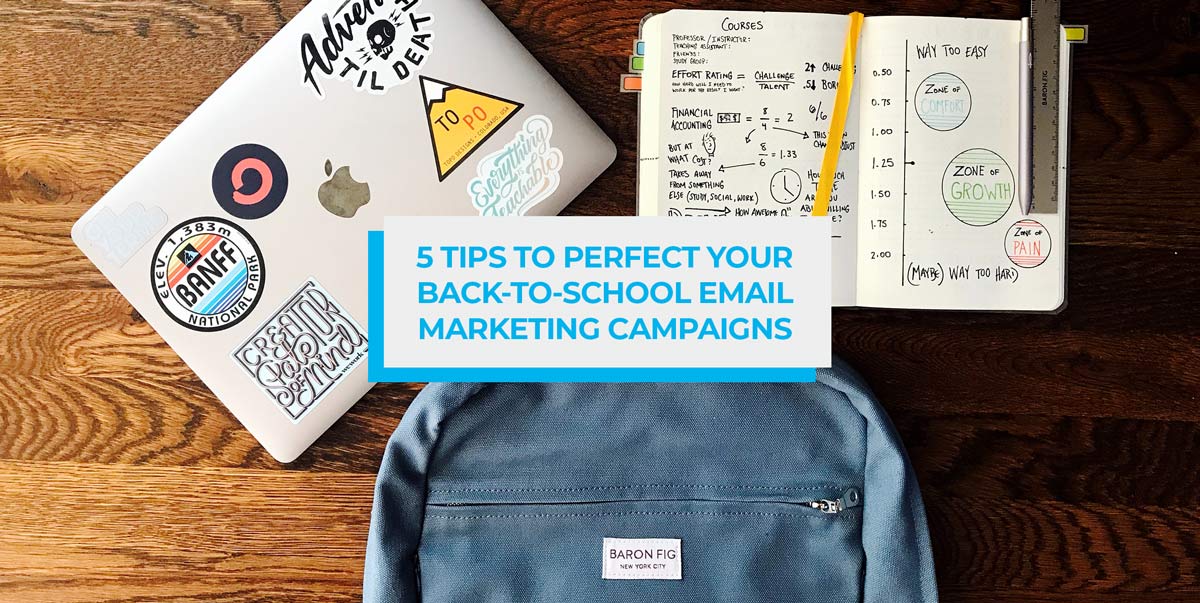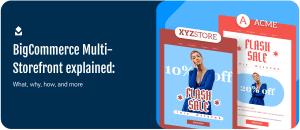As summer comes to an end, school kids and college students are all slowly transitioning into the new school year. With this comes a huge annual e-commerce event, as millions of dollars are spent on clothes, shoes, electronics, stationery, and so forth.
In fact, the back-to-school period is the second biggest sales event in the year after the winter holiday period. The National Retail Federation estimates that $83.6 billion will be spent as students go back to school and college. This figure is up around 10% from 2016, where there was an estimated $75.8 billion spent. This is a huge opportunity for e-commerce stores, with 44% of back-to-college shoppers and 46% of back-to-school shoppers planning to shop online during this period.
However, back-to-school email marketing is a little different than sending out your regular personalized product recommendation emails to different segments. There are some practices you can adopt to get the most out of this e-commerce event – here are 5 tips you can use to get the most of your back-to-school email marketing campaigns:
1. Know who to target
Plenty of e-commerce stores still send out bulk email newsletters as a way to market their products to their prospects. We have spoken time and time again about how email blasts are ineffective; you really should be making use of personalized email marketing instead.
Using a one-size fits all blast strategy for your back-to-school marketing is especially ineffective, simply because of how big the pool of potential customers is. And within this group are several different demographics, all with different demands and different ways you should market your products towards them.
The way you construct your marketing emails to target elementary school-aged children is different to how you should target their middle school counterparts. You also have to take into account who is actually paying for these items. Making sure your marketing emails are appealing for parents as well is important.

Likewise, there’s a big difference in how high school students respond to marketing emails compared to how college students would. Marketers also tend to forget about targeting their emails towards teachers, many of whom have to pay for teaching supplies out of their own pockets.
Of course, this depends on what products you have on offer. The most popular and in-demand products for back-to-school shoppers are clothing, electronics, shoes, and school supplies (like stationery, backpacks, lunchboxes), in that order. However those returning to college prioritise purchasing electronics over clothes, and also have a demand for snacks and food, furnishing for dorms or apartments, and personal care items.
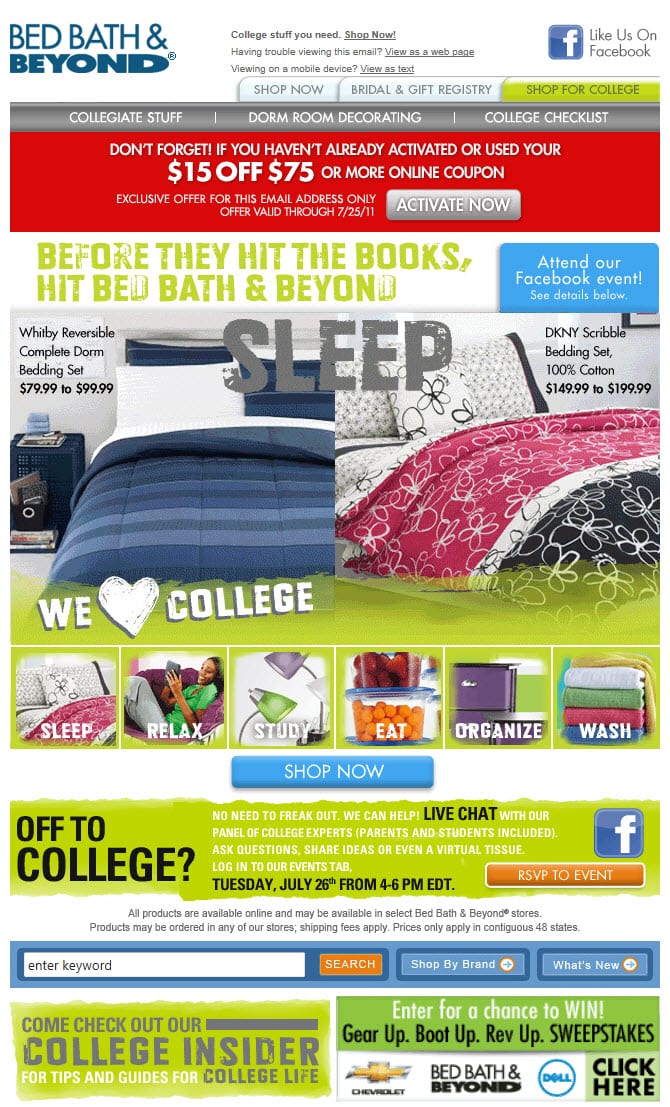
Before you start planning your back-to-school email marketing campaign, it’s important to first figure out which group(s) your products would best be targeted towards, then segment your list into groups before sending out a newsletter.
To personalize the products in every email you send, use a recommendation engine in your emails like we do with our Automated Product Recommendation Emails.
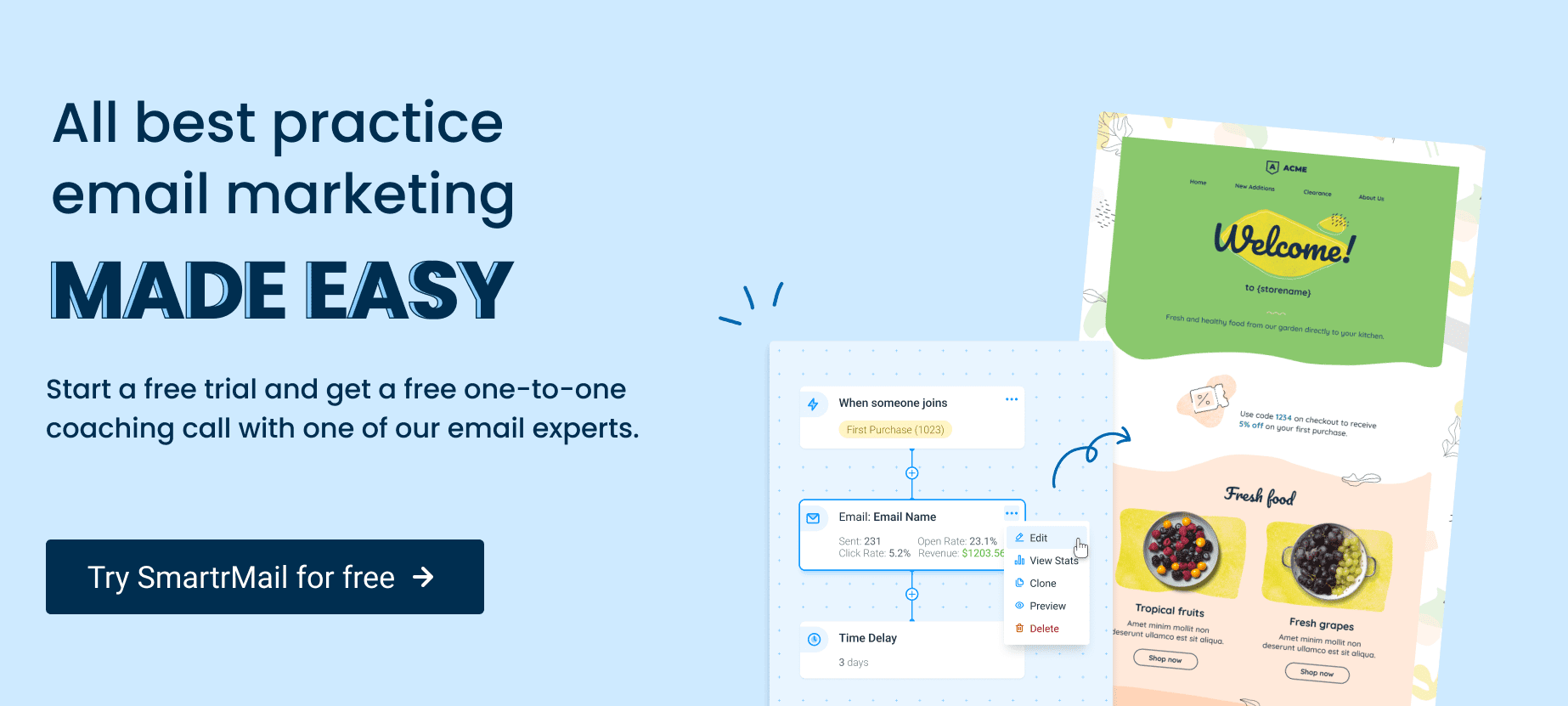
2. Adapt your email marketing campaigns
This leads on from my last point – once you have determined a suitable target audience for your emails, you need to cater your marketing emails towards them.
If you’re trying to target elementary and middle school children, I would recommend keeping the design of your marketing emails kid friendly, with plenty of bright colours and fun fonts to attract them. However, although 65% of back-to-school shoppers say that the majority of their purchases are a direct result of their children’s influence, it’s still important that you highlight the benefits for those who are actually paying for the items.
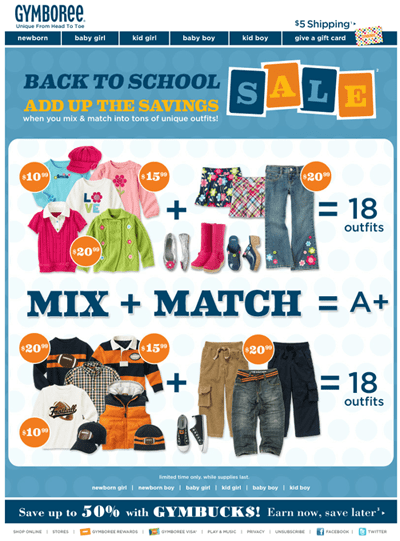
Make sure to include in the email copy how purchasing your products will be both beneficial for parents (for example, if they’re saving money with discounts of free shipping, or getting value for their money because your products are long lasting), as well as their children (such as, how your products will make their children happy, help them be comfortable at school, or learn more effectively). This principle also applies for targeting teachers, who will respond well to marketing emails that highlight savings and products that will assist them in educating their students.
In comparison, you should show high school students how cool your products are. Highlighting how your products will help them fit in with the in-crowd, by appealing to their desire to be cool, will be more effective than dazzling them with bright colours and exciting fonts. This can be applied to targeting college students too. However, make sure you also emphasize value for money or discounts in your marketing emails sent to this demographic. Even though back-to-college shoppers spend nearly double the amount of money when compared to back-to-school shoppers, college students are always hunting for bargains and finding ways to save money.
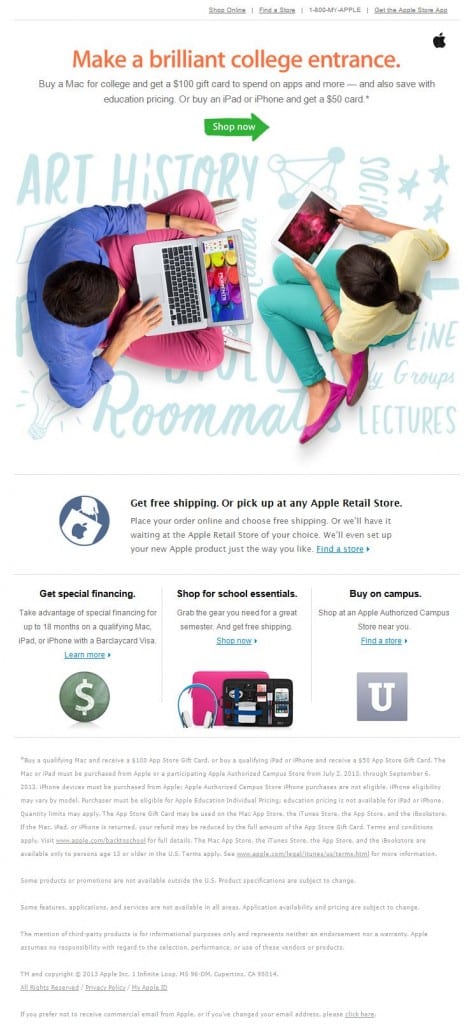
To target your back-to-school email marketing campaigns to these specific groups, segmentation is your best friend. Make use of the information you have on your email list, specifically the age of your subscribers. This will allow you to deliver more personalized content and relevant product recommendations to them.
To read more on email segmentation, read here: 5 Ways to Segment Your E-Commerce Store’s Email List.
3. Timing
Getting the timing of your marketing emails right is key to a successful back-to-school campaign. A survey conducted by the National Retail Federation found that 27% of back-to-school shoppers are planning to start shopping two months before the first day of school, while 21% said they would be shopping a week or two before school starts.
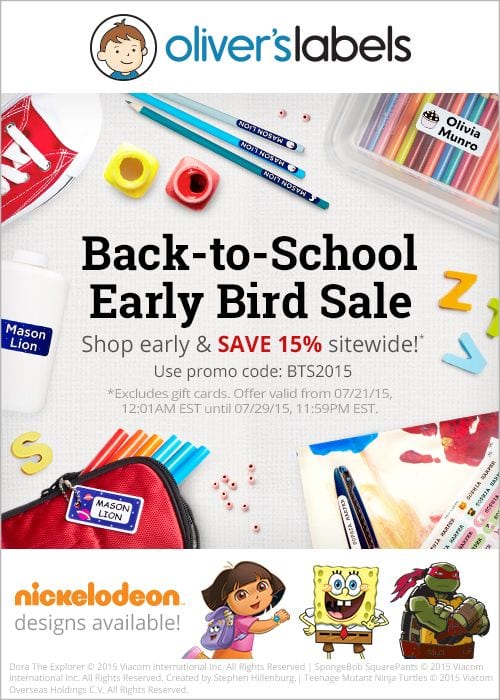
This also means that plenty of people will continue to shop once school begins. Not only this, but the start of the school year varies across the different states.
To remedy this problem, you should plan out a content calendar, and stagger your back-to-school emails over the last week of August and September. This should be based around the first day of school date in your area. Alternately, you can use segmentation to target the same email campaigns to people based on the location of those in your email list. This allows you to customize the timing of them, but will make them more relevant for your subscribers living in different states.
Sign-up to our newsletter and receive a free Calendar with all the most important key eCommerce dates that you shouldn’t miss in 2024
4. Generate a sense of urgency
As we get closer and closer to the first day of school, there’s plenty of buzz during this e-commerce event, as kids become excited to go back (or in some cases, dread starting the new school year), while their parents get stressed as they help their children to get organized before school begins. Use the excitement surrounding the big day to your advantage by generating a sense of urgency.
This can be done by sending out reminders to your subscribers, telling them that it’s x number of days or weeks until students have to return to school or college, or x number of days left to take advantage of your sale.
5. Abandoned Cart Emails
Chances are that most parents, college students and teachers will be browsing online, looking at a number of sites and comparing different products and prices, before making a final decision. So these back-to-school shoppers are probably going to be viewing items on your e-commerce store and maybe even adding them to their shopping carts, before continuing their research. In fact, Salecycle found this to be the biggest reason for shopping cart abandonment, with 34% of shoppers citing that they ‘were just looking’ for dumping their items. This is when you come in with abandoned cart emails.
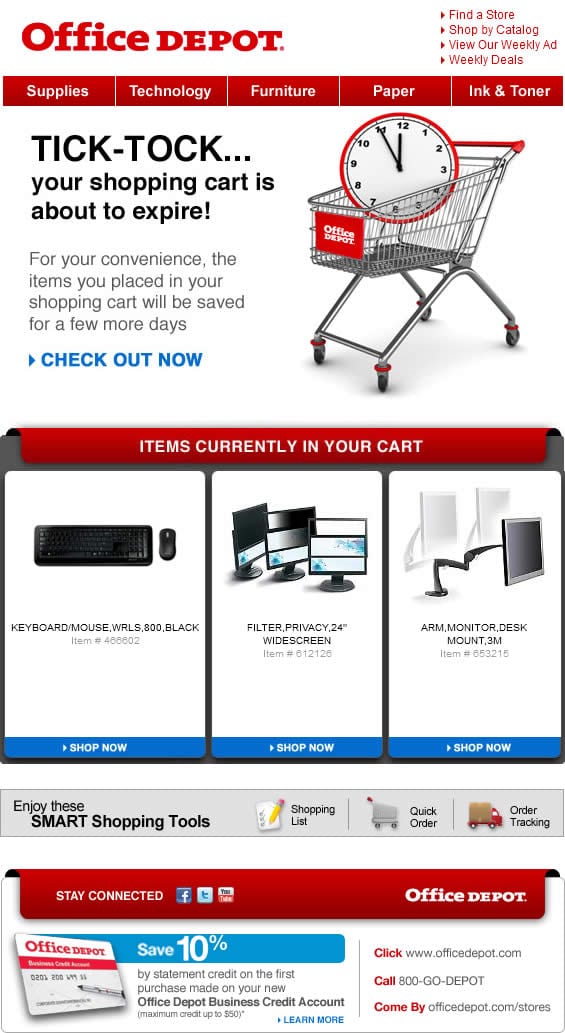
Remind them why your products are the ones they should be purchasing, by emphasizing why they’re going to be the most useful for them. I would also recommend an additional discount to help drive a conversion, by showing that you’re being competitive with other stores’ prices. It’s also important to be timely – set your abandoned cart email to be sent within an hour of the shopper leaving your e-commerce store, before they’ve found a better deal.
Conclusion
As the second biggest e-commerce sales event of the year, you will want to be able to effectively market your products towards students from elementary school through to college, as well as to parents and teachers. Although you will need to tweak your usual email marketing practices for the back-to-school period, following these 5 tips are sure to help you successfully adapt your campaigns.
Still looking for more guidance with your campaigns? We’ve got a more comprehensive guide to your back to school campaigns as well as more email specific ones:
- Great Back to School Email Examples
- 100 Back to School Subject Lines You Can Use
- Back to School Ad Examples
